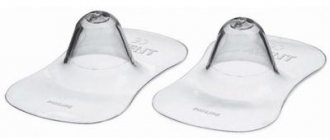Why do you need to wean?
Let's be honest: we want to wean a child from falling asleep during feeding not for him, but for ourselves. Is not it? What pushes us to take this step:
- Girlfriends or neighbors teach that it is high time to wean the baby from falling asleep while sucking, that the baby is so dependent;
- We don’t have time to do household chores because the baby doesn’t sleep without the breast;
- We have to sit for a long time in an uncomfortable position, which causes our back to become stiff and painful;
- Having seen enough of other people’s “independent” children, we begin to think that falling asleep with the breast in the mouth at his age is pathologically abnormal, that this may be some kind of mental disorder, and the child urgently needs to be weaned from this;
- We want to carve out time for ourselves - to relax, “get ready”, and get a good night’s sleep.
There is no need to reproach yourself for this: getting your hair done or relaxing are absolutely not reprehensible desires of any normal woman. And a nursing mother is no exception.
But let's not forget that it is extremely undesirable for a child to fall asleep alone in the first months of life: contact with his mother, her smell, and sucking at the breast are of paramount calming importance for him.
Yes, even if you look at the natural pattern of child development, then when a child sleeps only with the breast in his mouth next to his mother, this is natural.
At the same time, from the age of 9 months, a child may well fall asleep in his mother’s absence without a breast, with a person he knows well and is close to him.
If this state of affairs causes you unbearable discomfort, you will have to look for a compromise.
Either organize nighttime sleep in this way so that you can quickly, half-asleep, breastfeed and continue to sleep, or start working on separating breastfeeding and sleep so that the baby develops the skill of falling asleep without you.
A child sleeps only with the breast in his mouth - how does this affect sleep?
At first, all mothers are touched when the newborn sucks sweetly, falling asleep at the same time. The baby is so calm and happy lying at his mother’s breast! Six months fly by quickly enough, the sweetness of tenderness also dissolves. The mother begins to understand that the child now sleeps only with the breast in his mouth, and the chances of putting him to sleep without feeding are almost zero. My own fatigue has accumulated over six months of sleepless nights and is ready to develop into nervous trembling at the thought that another night marathon of constant feedings lies ahead. The mother feeds, overcoming fatigue, sacrificing her interests for the sake of the child. Are the interests of the child really taken into account in such a situation?
Feeding followed by sleep is absolutely justified if the baby is not yet one and a half months old. But from three months on, the sleep structure changes and melatonin . From this point on, the baby's brain cannot reach the deep sleep phase if it is involved in the sucking process. From six months, the sucking reflex is reorganized into the habit of sucking. Habits can be useful and harmful. Some can make life more pleasant and harmonious, while others can limit freedom and harm health. A person, as a rule, wants to get rid of the latter. We must act in the same direction when talking about the child’s habits. If the child wakes up between sleep cycles, and he does not yet know how to fall asleep on his own without your help (for example, rocking or breastfeeding), then your task is to teach the baby to fall asleep without your active participation. Try not to do for your child what he can already handle on his own.
Systematic work produces results
Of course, falling asleep without a breast is an additional burden for the mother. Naturally, this will soon lead to a weakening of the mother-child bond, but for now everything is only getting worse. Instead of giving the baby the breast and sleeping peacefully in the same bed with him, she needs to sing songs, rock, stroke the baby, and offer him some water.
But several months of systematic work are yielding results. The baby gradually stops asking the breast to fall asleep day and night. The main thing is to learn it once. Some women at this moment feel some emptiness, the loss of something very important that has been happening between them all this time.
At this time, you can decide for yourself whether it is worth ending breastfeeding completely or continuing until it reaches 2 years. Everyone decides this for themselves. But most women take this step because they are tired of endless evening and night feedings. But if all this is missing, then breastfeeding can be preserved as a support for the body and maintaining a special relationship between mother and child. Remember that these moments will never happen again. Tomorrow he will be older, and, like many mothers, you will feel nostalgic for sleepless nights with a restless bundle in your arms, sweetly falling asleep at your chest.
Is this normal?
The mother may be concerned that the baby will choke on milk. But if the correct position is chosen for feeding, the baby eats leisurely, there is nothing to worry about. What to do if a baby falls asleep while feeding depends on his condition.
When the child is healthy
If your baby falls asleep after a few minutes while breastfeeding, there is no need to disturb him. When the baby's health is normal and weight gain is good, falling asleep at the breast is normal. This happens because he concentrates, calms down, and the substances that make up the milk also act. Remember three basic rules:
- carefully remove the breast from the baby’s mouth if he falls asleep;
- do not deny him food if he wakes up and reaches for the breast again;
- Don’t wake him up, but rather put him next to you.
The first milk a newborn receives is less fatty. The baby absorbs it immediately as soon as he starts eating. Then a fattier one comes in and it has a calming effect. If your baby falls asleep during feeding and is fast asleep, do not wake him up, rock him in your arms or put him in bed next to you.
When you put him in bed, he may wake up. To avoid this, wait until your sleep is deep. It is easy to identify - in the REM sleep phase, the child's eyelids tremble, he can move his arms or legs. In deep sleep, the eyelids do not tremble, breathing is slow and deep. In this state, you can safely transfer the baby to the crib.
Consultants identify several reasons why a baby may fall asleep while breastfeeding:
- Reduced activity of the mammary glands - perhaps the baby has to get food with great effort by his standards, since the flow of milk is difficult. So he quickly gets tired and falls asleep.
- Difficult childbirth, taking medications after childbirth - these reasons can cause slow reactions and lack of interest in the mother's breast.
- Incorrect latching of the nipple, which reduces interest in sucking.
- Excess milk - a breast that is too tight is uncomfortable for the baby to latch onto, he gets tired from trying hard and quickly falls asleep.
- Weak sucking reflex. This problem can arise as a result of a difficult birth or, on the contrary, a rapid and easy one.
If none of the reasons describe the situation, simply leave your baby to rest. When he gets hungry, his sleep will become shallow, and then he will wake up completely and demand milk if he is still hungry.
Don't worry that your baby will get used to falling asleep only with the breast. There are many ways to wean him from this ritual and instill other healthy habits that promote sound and healthy sleep.
When the baby is weak
You should be more careful with weakened children. They may fall asleep because they do not have the strength to fully absorb milk, and feeding is difficult. In addition, a weakened body has an increased need for restorative sleep.
Basic rules when feeding weakened children:
- feed on demand or more often (offer the breast yourself);
- watch your baby’s reflexes while eating and falling asleep;
- When the sucking reflex weakens, be careful when stroking, do not frighten the child with sudden movements.
If a weak newborn falls asleep immediately at the beginning of feeding, he should be woken gently before he is sound asleep. Such a child especially needs good nutrition, and during sleep his sucking reflex may persist.
Don't worry if you think your baby isn't getting enough nutrients. This can only be determined by weight gain. If it is below normal for his age, you need to optimize the feeding position. If sufficient, wean the weakened newborn only when he feels unwell and the reflex is dulled.
We recommend reading: Review of the 5 most popular “go to sleep” cereals for babies: which one to choose?
Use a few tips if your child falls asleep:
- squeeze a couple of drops of milk onto your lips - this may make you want to continue eating;
- move the nipple over your lips, squeezing out milk - this also stimulates the sucking reflex;
- Rock him lightly if he is not yet fast asleep.
When the newborn comes to his senses and reaches for the breast again, you should not deny him this. Previously, doctors recommended feeding your baby on a schedule to provoke hunger at the same time every day.
Today, consultants recommend feeding the baby on demand - this approach is healthier for the baby’s body. If he does not ask for food for a long time, you need to contact a neonatologist or pediatrician to examine the baby again.
If a weakened child has a lack of weight gain, it is recommended to put him to the breast every hour. Even if he doesn't require food, the tips above will help awaken the sucking reflex.
Causes
If the child falls asleep only when feeding, we can talk about the pathological use of the breast to relieve stress. Emotional instability is provoked by the following factors in a child’s life:
- The baby cannot get a full night's sleep due to illness or colic (up to 6 months).
- Fatigue associated with constant emotional and physical overload.
- Disturbances in sleep and rest patterns due to the mother's fault.
- Period of teething.
- The baby spends little time with his mother: the woman goes to work and often leaves the baby with nannies, grandmothers, and dad. In the evening, the little one does not want to part with his beloved mother, forcing her to stay nearby longer.
- Mothers themselves do not strive to change the ritual of falling asleep: they worry that the babies will not eat their fill and will stop suckling at the breast altogether.
Important! To obtain a positive result from the experiment on weaning oneself from sleeping with the breast in the mouth, it is advisable to exclude from the baby’s life factors that provoke nervousness in the evening and to maintain a daily routine.
How to teach a child to fall asleep without breastfeeding?
A few more words about the child’s age.
Important! The nervous system of a child under 3–4 months is very immature. And the baby himself still cannot imagine himself without his mother - in his understanding, you are inseparable. After all, this is exactly what happened for 9 months in a row.
Therefore, in the first few months of his life outside of his mother's tummy, the most useful thing you can do is to provide maximum intimacy with him. Including allowing you to fall asleep under your heart.
A child of 2, 3 and even 5 months definitely sleeps only with the breast. Forcing this process by trying to wean the baby from sleeping while feeding is not at all beneficial for the baby.
What else can you do
If the above methods do not help, replace the breast with a stuffed animal . Your baby will definitely love falling asleep with his new friend. The main thing is to choose a toy for your baby that you will definitely like. And in order not to make a mistake in choosing, go shopping with your baby.
It is also recommended to spend more time outdoors . During a walk, children show maximum activity, as a result of which the child becomes very tired. And at home you can play with it.
This way the child will definitely be exhausted and fall asleep on his own.
When can you try to wean your baby from falling asleep with the breast?
The earliest age when this is acceptable is 6 months. It is best to do it around 9–10 months, when the child has an alternative in his diet and is not completely dependent on breast milk.
At 6 months we start complementary feeding, but only by 9 months does the child reach more or less decent volumes of portions that he can get enough of without breast milk.
From 6–9 months, you can try to practice gradual separation of breast and sleep, under several conditions:
- the baby is somatically healthy;
- gains weight well;
- calm;
- eats complementary foods without problems.
How to do it?
How to wean a child from falling asleep with the breast? There are different methods on how to do this.
One of the very effective ways is to separate nutrition and sleep in the child’s understanding. That is, shift the burden of bedtime to dad: he doesn’t smell like mom or milk.
But at the same time, dad is the same dear person, whom the child trusts no less. Dad can be just as affectionate and caring:
- Give a feeling of physical contact;
- Calm down with rocking, lullaby, stroking;
- Or in some other pleasant little way that will not remind you of sucking.
On a note! If the mother, after feeding the baby, hands him over to the father to put him to bed, then after a few days, and perhaps weeks (these periods vary from person to person), the baby will be weaned from the ritual of falling asleep while sucking. And he will learn to find peace in other activities.
This technique is especially effective if the family has rituals for sleep. That is, every evening the same actions are performed with the baby and in the same order.
For example:
- bathed;
- changed clothes;
- fed;
- revered;
- sent all the toys to bed;
- got a massage;
- sang a lullaby;
- and laid him down.
The set and sequence of such actions are individual. The main thing is that they are performed daily in the same order.
There is another way to wean your baby from falling asleep with the breast.
It consists in the baby gradually getting used to the fact that he is given the breast to suck not so that he falls asleep under it.
Mom feeds him about half an hour before bedtime, and spends the rest of the time with him, soothing him in other ways:
- You can read it;
- Sing lullabies;
- Get a nice massage;
- Pat on the back;
- Wiggle.
That is, the baby must learn that he calms down when his mother is next to him, and not because he is suckling her breast. At the same time, if at some point the baby persistently demands feeding, do not refuse him, but also do not let him fall asleep on the chest.
The main thing here is gradualism.
Over time, “rollbacks” back to falling asleep while feeding will occur less and less often.
Important! This method can take up to several months, but teaching a child to fall asleep without breastfeeding can be the least traumatic for the young nervous system.
What techniques can you use to separate eating and sleeping?
- Trust a close relative to put your baby to bed, starting at four months. A child needs the experience of falling asleep not only with his mother. At this moment, you should not deceive the child and try to hide from his sight without warning. Let a loved one come in advance, play with the child, then the mother gives complementary foods, offers the breast, and only after that allows the father or grandmother to complete the process. Mom should not have doubts at this moment, because... the baby is already tired, wants to sleep, a reliable person is next to him, he will help him fall asleep and feel safe.
- Believe me, the main comfort and stability that a child needs is provided by you, your peace of mind and care, and not your breast or bottle of milk.
- During the day, feed your baby in a calm, familiar environment. Minimize distractions - TV , telephone, communication with other people. This is the time of your close communication with your baby.
- To break the connection between food and sleep, introduce another element of the ritual between them. For example, when you feed, put a soft toy in your baby's hand and tell a story about it using simple sentences and onomatopoeic words. You can repeat the fairy tale twice. After a certain time, tell him that it’s time for “this bear” to go to sleep, and let the baby show you how to fall asleep. Turn off the night light. Explain that mom is nearby, shush her. If the child bursts into tears, then pick him up, calm him down, but then put the baby back in the crib.
IDEAS:
You can use reading a fairy tale. While you are feeding in the chair, read a book at the same time, trying to interest the baby, then take the breast or bottle, finish reading, put the baby in bed, turn off the light.
Recommended reading: Books that are best to read before bed
You can feed immediately after the bath, while the baby is still in the towel, then put on pajamas and put him to bed.
- Between eating and sleeping, another relative may join in. After feeding, dad can read a fairy tale or hold him in his arms until he calms down; he certainly won’t be tempted to feed the baby, because Mom comes out of the bedroom with the breast and bottle. The most important thing is to survive the first 3–4 days of training so that the child has the experience of falling asleep without feeding. At this moment, do not leave the child alone in the room, calm him down in every possible way with your voice and short strokes. After a week, the baby will forget the previous method of falling asleep using the breast.
- Do not turn off the light during feeding, so it is less likely that in the baby's mind feeding will be associated with sleep.
- At night, take a break in feeding from 12 o'clock to 4 - 5 o'clock in the morning. Avoid frequent night feedings; do not feed more often at night than during the day. If the baby wakes up an hour after the previous feeding, let him drink some water from the sippy cup (this reduces the sucking habit). Don't let your baby sleep with the breast in his mouth.
- Start morning feeding after 6:00.
- During the day, spend more time communicating with your child. And he will not have an irresistible desire to be with you at night.
- Move on to learning how to fall asleep on your own. Remember that a crib is not needed to store toys, it’s time for the child to sleep in it. This is safer for the baby, who is actively learning new motor skills. First put the child for daytime and then for nighttime sleeps. The child should go to bed sleepy, but not asleep.
Weaning a baby from the breast
The baby falls asleep much faster after feeding. However, sooner or later he will have to be weaned. It is necessary to gradually teach the baby to fall asleep on his own. The only exceptions are those cases in which the baby should be fed milk.
At the first stage, all children begin to be capricious and refuse to sleep. They are already accustomed to constantly feeling contact with their mother, so they cannot imagine a vacation without her. In this case, unpleasant sensations arise in their body, which only caring parents can help get rid of.
Stroking helps your baby relax and fall asleep
It is possible to put a newborn to sleep without using the breast. To do this, it is enough to follow simple recommendations from experienced mothers:
- During the weaning period, the baby needs to be provided with the most comfortable conditions in the family. He instantly reacts to the worsening mood of his mother, so he becomes as capricious and irritable as possible. More recently, he used his mother’s breast to calm him down, but now he cannot do this. If he is under severe stress, then attempts to cling to the chest will appear much more often. Parents must do everything to ensure that during this period of development the little one feels exclusively good and positive emotions.
- In order for the baby to fall asleep faster, almost all parents are ready to do everything for him. If they plan to quickly wean him off the breast, then being led by whims is not allowed. It is best to put the baby in the crib and not pick him up at the slightest change in mood. Additionally, it is not recommended to give him breastfeeding or pick him up. The weaning period lasts differently for all children. As a rule, it is approximately seven days. At the end of this period, the baby will be able to fall asleep on his own without his mother’s breast.
- It is allowed to additionally use a bottle or pacifier during the weaning period. They are used to simulate the presence of the mother.
How to separate food and sleep?
The situation when a child sleeps only with the breast is quite acceptable until the age of one. Then food and sleep need to be separated by time.
At the same time, it is not at all necessary to cancel breastfeeding and switch to a bottle.
To form the right habit, use the following tips:
- Don't miss the moment when your baby falls asleep without breastfeeding one day. This can happen at any age. But usually not earlier than 6 months. Repeat the situation the next day. But don't insist too hard if it doesn't work out right away.
- Spend more time with your child during the day and evening. Satiate your baby with tactile contact, communication, games, kisses.
- Feed not in the bedroom, but in the kitchen. Changing the feeding place and the environment (lights on, loud TV) will have a positive effect on breaking the food=sleep association.
- Shake the baby while sucking, and then hand him over to dad or grandma to rock him to sleep. Let another adult read a book or sing a lullaby.
- If you use the breast to calm you down during crying and moodiness, find another method or reduce the time you spend on the breast during moments of emotional distress.
- Feed your baby 30 minutes before bedtime. For children after 6 months, give kefir, cottage cheese, vegetable and fruit puree at night. Offer breast milk last.
Tracy Hogg Method
To unlearn it, you will need a timer with a signal, such as a bell. For the first time, wait for external signs of fatigue and a desire to go to bed. When your baby starts yawning, go to the bedroom and take your watch with you. Set a timer for 10 minutes, feed your baby until the alarm goes off, and remove the nipple.
Tell your baby it's time to sleep and put him in his crib. Sit with him, pat him on the back, talk. If the baby starts crying, try to calm him down, you can pick him up and walk around the room. The process will take 40–60 minutes. Feeding cannot be started again. The child should fall asleep on his own in his crib.
The next day, give the baby cottage cheese and kefir before bed. Then go to the nursery and set a timer for 4-6 minutes. Repeat the ritual from the previous evening. Do this until the baby lets go of the breast at the signal of the clock on its own and settles down in the crib without hysterics.
Fading
The method is long but effective. The child will wean himself from falling asleep with the breast in his mouth in 1–2 months. The method has another name: “Two steps forward, one step back.” At first, the mother breastfeeds as usual. But for a shorter period, for example 10 minutes. Then he takes the nipple away and reads books, sings songs so that the baby falls asleep. If the baby asks for the breast, you cannot refuse, but you need to delay the moment by entertaining the baby. Gradually, the lullaby will replace breastfeeding at bedtime.
Important! To maintain lactation during the weaning period, it is necessary to express. Pour the milk into a bottle and leave it in the refrigerator for tomorrow.
What happens when a child already knows how to fall asleep without a breast?
Well, in a few months the result will be achieved: your baby will no longer need to suckle while falling asleep. What to do with it is up to you. Many mothers, who previously wanted to wean their baby off the breast as quickly as possible because of fatigue from long evening and night sucking, will now be ready to continue breastfeeding - after all, their baby will no longer hang on the chest before bed and at night. For some, the next step will be the transition to sleeping separately with the child - because now the nights are much more peaceful, and the baby is more ready to go to sleep in his own crib. Some children, after mastering falling asleep without a breast, begin to suckle less and less, and after a few months they stop asking for the breast altogether. Some babies can continue to breastfeed 1-2 times a day for a long time. How exactly you will succeed depends on the characteristics of your child, on your relationship, and finally, on your desire to continue feeding or to finish feeding smoothly. But in any case, you will help your child grow up and learn new ways of calming him down, and you will do this gently and easily, without prematurely depriving him of his usual infant way of calming and contacting his mother - sucking on his mother's breast.
How to wean it off?
To wean a child from sleeping with the breast in his mouth, you need to choose the right time and conditions:
- The baby is 9–12 months old.
- The baby eats complementary foods well (porridge, purees, fermented milk products).
- The baby is healthy and gaining weight normally.
- The child has his own crib; he is not used to sleeping with mom and dad in the same bed.
If the necessary conditions are met, you can begin to form a new habit step by step. There are several ways to solve the problem. Let's talk about the most effective of them.
Feeding 30 minutes before bedtime
Parents' experience shows that early dinner and refusal to suck titi before bedtime are more difficult for children under one year of age to tolerate. Use this method for babies from 12 months.
- Prepare your child for bed in advance: bathe, change clothes.
- Let the breast nurse for 10-15 minutes. The child should eat completely.
- Free your baby's mouth from the nipple before he falls asleep.
- Talk a little with the baby, play calm games, read a book. You should not entertain your child for a long time so that he can sleep peacefully.
- After 20–30 minutes, place the baby in the crib and stay close until he falls asleep. Give her a pacifier to calm her down.
Dad's help
Teaching a baby to sleep without a breast is easier if the parent has nothing to take out from under his shirt. Dads don't have to restrain themselves; turn to them for help. Fathers need to take over mom's duties for a few days. Going to bed will look like this:
- Mom feeds the baby 30 minutes before bedtime and leaves the room, or better yet, the apartment. Now dad remains the main nanny.
- He prepares the baby for bed: bathes, dresses.
- He carries the little one to the nursery and puts him in the crib.
- He sits next to him, reads books, sings lullabies or rocks his daughter and son in his arms.
- You need to react calmly to screams and hysterics. You can let your baby drink from a bottle or offer a pacifier.
New rituals
To teach a child to sleep without a breast, you will have to introduce new rituals. For a baby, breastfeeding before bed is a familiar ritual. It's been this way since birth. The child learned to calm down on the chest and suck milk while sleeping. Now he will have to get used to it. Previously, it was clear to the baby that the mother was breastfeeding, which meant that he could eat and sleep. Now, in order to understand that he needs to sleep, he needs a new ritual.
We recommend reading: Why should you sleep in complete darkness and cannot go to bed with the light on?
A new ritual is a sequence of any actions that are not related to feeding in bed. Taking a bath, a light massage, changing into your favorite pajamas, reading a book and listening to a lullaby. Mom can supplement or change the order of actions to make the ritual convenient.
Over time, the baby will get used to the fact that after bathing and reading a book, he needs to close his eyes and fall asleep. At the same time, it is not at all necessary to curtail lactation completely. A mother can feed her baby before bed, but not in bed when she falls asleep.
Cardinal method
Suitable for children aged one and a half years. At this age, there is really no need to sleep holding your chest:
- Breast milk does not play a big role in the baby's development, growth and weight gain.
- Evening and night sucking is necessary as a bad habit, a ritual.
The child urgently needs to be taught to be alone in the crib, without his mother’s tit. To do this quickly, you can use the following measures:
- Give the child an overnight stay to grandparents. The baby will have to stay with them for several days. Relatives need to be patient - the child will cry and wait for the mother to go to bed.
- There is also a ritual of going to sleep during the day. Grandmothers should read, rock the whimsy in their arms, sing lullabies, and distract with toys.
- When mom returns from the “trip” and takes the baby home, you need to remain tough and follow the new rules. Under no circumstances agree to have your breasts pulled out. On the first day, the baby, of course, is naughty, but then he will understand that a new “adult stage” of life has arrived and he needs to be independent.
How to put your baby to sleep without motion sickness
Many pediatricians advise against rocking your baby before bed, as he develops a strong connection between rocking and falling asleep. In this case, if he is not rocked to sleep, he will not sleep. Difficulties begin when the child becomes too heavy for the mother's hands.
There are various techniques that help resolve the issue of sleep without motion sickness. There are environmentally friendly and less gentle methods, depending on how quickly the family decided to achieve results. One of the most popular is the Spanish method. It is intended for children older than six months and allows you to teach your baby to sleep in his own crib without motion sickness in a week. The mother needs to calmly and confidently perform the bedtime ritual: for example, give the baby his toy, which will sleep with him. At the same time, mom says: “Now we will learn to sleep. You will lie down with your teddy bear and sleep soundly until the morning. I very love you".
After which the mother leaves the room, leaving the child alone for the whole night. If he starts to cry, she does not return immediately, but does so at certain intervals, calms him down and calmly insists on his own: “Now you will go to bed and stay in your crib until the morning, your teddy bear is with you, I love you.” Every day during the week, mom returns to the room less and less often.
This method has helped many parents who previously made the following mistakes:
- gave the baby the breast every time he cried;
- rocked him to sleep;
- did not follow the daily routine;
- allowed the baby to achieve what he wanted by screaming and protesting;
- put the child to sleep in the parent’s bed, etc.
If parents want to teach their child to fall asleep on their own without tantrums, then they should be patient and tune in to a positive result. It is necessary to take on this as an exciting task that brings pleasure to the baby.
What can't you do?
Prohibited actions:
- start weaning when the child feels unwell or is teething;
- during feeding, forcefully take the breast;
- wean if the baby is hungry;
- smear the nipples with bitter, salty or paint them with brilliant green;
- say that the boob is sick because the baby sucked on it;
- ignore the baby’s needs, leave him alone in the room;
- show your indifference towards the child.
If during the weaning process your baby gets sick or shows signs of severe stress, you need to stop and take a step back. You can return to the path to your goal only when the baby’s condition stabilizes.
Komarovsky about the problem
Komarovsky’s opinion largely coincides with the common point of view of pediatricians who support the “Soviet approach.” So, he recommends feeding the baby only on a schedule, even if he asks to eat earlier and outside these time intervals. This is how children fall asleep in their cribs and do not get used to the breast.
According to the doctor, if in response to a baby’s hysterics and demands a young mother gives him the breast, then it is the baby who is raising her, and not vice versa. But it should be understood that this position does not coincide with the official recommendations of WHO and lactation consultants.
A number of studies supported by WHO prove the benefits of feeding on demand, even after a year:
- increased fat content of milk;
- meeting the need for proteins, fats and carbohydrates;
- increased concentration of antibodies;
- reduced likelihood of allergic diseases;
- rapid recovery from characteristic acute respiratory infections;
- better level of social adaptation in the future.
When a baby is denied food when he feels hungry, self-doubt is also born. Remember that psychological problems learned from childhood are difficult to solve.
Using the simple techniques given above, it is quite easy to wean your baby from falling asleep on your chest. And refusing to eat food “out of schedule” is stressful for both the baby and the young mother. Remember also that healthy and complete lactation is a natural process for the female reproductive system, so do not deny this to either the baby or yourself.
In all matters relating to breastfeeding and raising a child, you should rely on your own feelings and recommendations of a consultant. If your baby falls asleep on your chest, don't limit him to this, and later just use other ways to lull your newborn to sleep. Never deny a weakened baby good sleep and feeding.
Fading method
This method is suitable for those who are willing to spend a lot of time instilling a new habit. The child will completely wean himself from falling asleep with the breast in 1-2 months . At the beginning of the journey, leave everything as it is, but for a shorter period of time. For example, try feeding your baby for 10 minutes. After the time is up, start singing a lullaby or reading books.
do not refuse him under any circumstances . But before you give your child what he wants, try to delay the moment as long as possible.
Perhaps interaction with you will captivate the baby so much that he will completely forget about food
Alternative methods of calming down
There are several effective ways to wean a small child from falling asleep without breastfeeding. Each of them represents a specific activity that is included in the daily ritual of going to bed:
- Listening to music. Many children love to sleep to music. A common option for “sound therapy” is listening to white noise. This could be the sound of a flying airplane, dripping water, a running vacuum cleaner, etc. Also among the recommended “music” are the sounds of nature (birds singing, the rustling of trees, the sound of the sea). You can choose a special melody to relax before bed. In rare cases, a child falls asleep well to cheerful and rhythmic music. If the mother decides to choose a melody, then it is advisable that there are no words in it (otherwise they will prevent the baby from sleeping peacefully). While listening, you can resort to rocking, stroking the baby on the back, arms, legs, thus setting him up for sleep.
Recommendation. It is desirable that the melody be the same every time. Then the child will form a clear association that it is this music that precedes a quick fall asleep.
- Reading books. It is necessary to ensure that the baby does not fall asleep during feeding. As soon as signs of drowsiness appear, the baby should be placed in the crib. If the baby is capricious, you can leave him next to you, but block access to the breast. Next, the mother begins to read the book in a calm, soothing voice. It is recommended to accompany the process with gentle stroking of the child’s head, back, and arms. Under no circumstances should you combine reading and lactation. Over time, the baby will develop the habit of falling asleep while reading without breastfeeding.
- Putting the baby to bed by another family member. If the baby has a strong connection with a close relative, then it is recommended to entrust this person with the bedtime procedure. Father, grandmother, and grandfather can teach a child to a new ritual of falling asleep. Since these people are physically unable to carry out breastfeeding, the baby will not have any temptation.
On a note. If the mother is not ready to refuse breastfeeding to her child, you can use the “Timer” technique.
This method involves gradually reducing the lactation time before bedtime. Using a timer, the baby is taught to eat within a certain time, and then put to bed.
Basic mistakes
In order for the baby to wean off the breast without unnecessary stress, the mother needs to refrain from the following actions:
- Showing indifference to children's whims, crying;
- Leaving the children's room after going to bed. You need to stay with the child for some more time to make sure that he is sleeping peacefully;
- Using a bottle of milk to fall asleep (as an alternative to breastfeeding).
Sources
- https://uroki4mam.ru/kak-otuchit-rebenka-zasypat-s-grudyu
- https://spimalysh.ru/vse-o-sne/kormleniye-i-son/kak-razdelit-edu-i-son
- https://ProGrudnoe.ru/trudnosti/kak-otuchit-rebenka-zasypat-s-grudyu.html
- https://razvitie-vospitanie.ru/kak_otuchit/zasipat_s_grudyu.html
- https://ProGrudnoe.ru/trudnosti/kak-nauchit-rebenka-zasypat-bez-grudi.html
- https://kpoxa.info/sovety-mamam/ulozhit-bez-grudnogo-kormleniya.html
[collapse]











